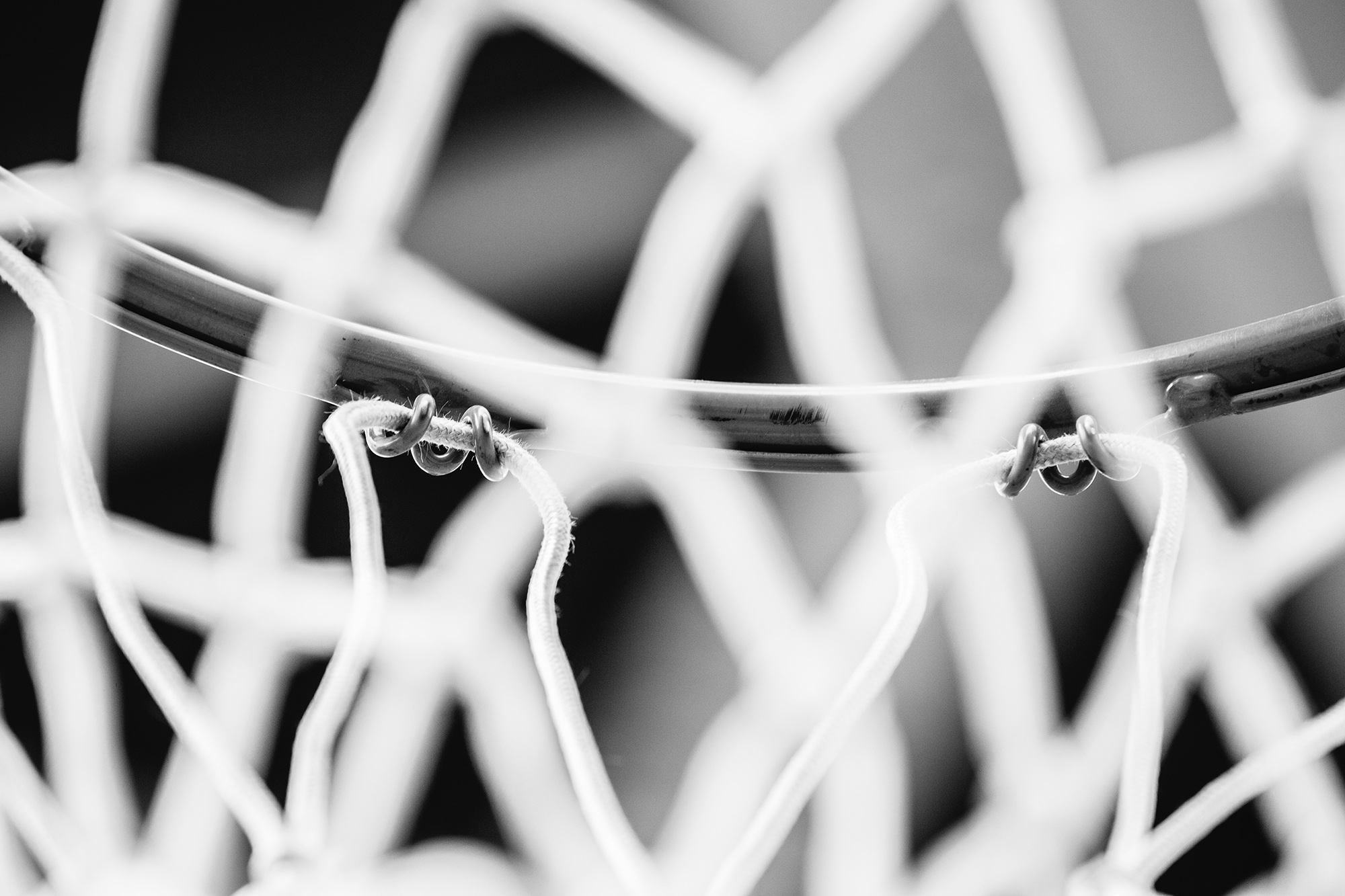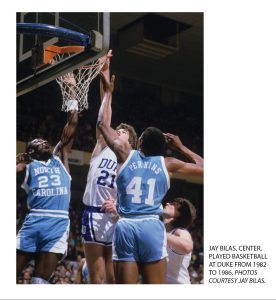by Jay Bilas
Vol. 103 No. 3 (2019) | Fees, Fines, and Bail | Download PDF Version of Article
Attorney, ESPN analyst, and former NCAA basketball player Jay Bilas weighs in on the debate over paying collegiate athletes

The cover story of the summer 2019 edition of Judicature was, literally and figuratively, a slam dunk. It featured Duke basketball player Zion Williamson soaring above the net in Duke’s Cameron Indoor Stadium and was accompanied by Duke Law Professor Paul Haagen’s exploration of the legal intricacies of the NCAA’s longstanding policy not to pay athletes.
Since then, California passed a law that will allow athletes at California colleges to profit from their own name, image, and likeness starting in 2023. And as this story went to press, the NCAA announced that its Board of Governors had voted unanimously to permit student-athletes to profit from the use of their own name, image, and likeness “in a manner consistent with the collegiate model” and that it would develop policies to implement the change by January 2021.1 But the NCAA continued to call the California law “likely unconstitutional” and said it is “closely monitoring the approaches taken by state governments and the U.S. Congress and is considering all potential next steps.” 2
Having provided the academic view of the controversy, we wanted an insider perspective. ESPN college basketball analyst Jay Bilas has been an outspoken advocate of paying athletes. A former Duke basketball player himself, Bilas also holds a law degree from Duke. Here he answers questions posed by Judicature’s articles editor, Amelia Ashton Thorn.
I do not believe the law requires payment to NCAA athletes, but I do believe that the law allows payment to players. To some, that may be a distinction without a difference. However, in multiple rulings over the years, courts have held that the NCAA has violated federal antitrust law. Clearly, judicial support for the NCAA’s position on amateurism has been slowly eroding. For decades, the NCAA and the courts relied on dicta from a United States Supreme Court case, NCAA v. Board of Regents,3 to claim that athletes cannot be paid. In recent cases, that position has been invalidated.
In my view, there is no legitimate justification to limit the compensation of an athlete, just as there is no legitimate justification to limit the compensation of coaches, administrators, or staff. I find the NCAA’s position — that compensation above expenses for athletes would reduce demand for the product — to be without basis and unpersuasive. The idea that the public embraces a product sold to them for billions and pays coaches and administrators millions, yet anything above expenses to an athlete would jeopardize the entire enterprise, is laughable. Nobody objects to a seven-figure salary to a coach, but a player is allowed fair-market value and public demand is threatened? That is absurd on its face.
The NCAA’s strongest argument, and one that the courts continue to buy, is that the multibillion-dollar entertainment enterprise is about education and allowing compensation would somehow make an athlete a nonstudent. In my view, there is no reasonable basis for such an assertion, but it is clearly the strongest argument the NCAA has. It is also the weakest argument the NCAA has. The idea that compensation would drive a wedge between athlete students and nonathlete students is meritless, in my view. No other student is told what he or she can earn or accept while enrolled. No other student is limited in any way by colleges and universities banding together to agree to cartel restrictions on compensation. Athletes, and only athletes, are subject to price-fixing among competitors. A non-athlete student may earn or accept anything his or her talents allow, and anything his or her university allows. A non-athlete student may be employed by his or her university, be paid fair-market value, and earn or accept any amount outside of his or her university. The only person, literally, that is limited in any way by agreement among competitive schools is the athlete. In my view, that is unacceptable and unjustifiable, especially when it is the athlete that is being marketed and sold for billions while being limited to expenses only. As the money from college sports continues to grow, this chasm between the enterprise and the limitations on athletes will become even more stark.
I see those federal decisions as another step in the evolution of athlete compensation. From the outside, it appears that courts are reluctant to make rulings that will substantively change the entire industry. However, these decisions erode the NCAA’s ability to limit athletes, and the NCAA knows it. Plus, this era of change is not occurring solely in the courts. The recent FBI cases and subsequent appointment of the Rice Commission further spurred discussion of name, image, and likeness [“NIL”] rights, and actions in Congress and in states have forced the hand of the NCAA to form a committee to examine NIL rights. The recent California bill is part of this trend. The NCAA has relied upon the public to recoil at the idea of payment to players, but now the public is slowly moving toward approval of allowing athletes to realize fair-market value.
This is where the NCAA is at its best. It sets forth how “complicated” this is and will be, and just throws up its collective hands and says there is no model and no fair way to accomplish pay to players. Of course, that is absurd. Essentially, the NCAA is saying there is no fair way to achieve fairness when it comes to athletes. Respectfully, the questions asked regarding athlete compensation are asked in no other area of college sports. Nobody asks, “how will we pay for seven-figure salaries to coaches? Where will the money come from? Which coaches should get the most money? Do we pay all coaches the same? What about coaches from different sports? Do assistant coaches make less than head coaches when they work just as hard?” Really, it is laughable. There are no spending controls on facilities, salaries, or travel, yet we have strict controls on players.
In my view, it is simple. Each school can decide whether to pay its athletes, which athletes to pay, and how much to pay. Each school is clearly capable of deciding which athletes to recruit and which athletes to put into the game when they need to win. They know exactly whom to pay and how much. I played at Duke, which has over 30,000 employees. Duke does not wring its hands wondering whether to pay the landscape professionals the same as the chief of surgery or the chair of the English Department. Duke does not find it too complicated to pay the basketball coach and the volleyball coach, or to price tickets to basketball games relative to lacrosse games. It is ridiculous to think that such decisions can be made in the conduct of this multibillion-dollar industry but is only complicated when it comes to athletes. The solution is simple: Eliminate amateurism rules and allow each school to pay or not as it sees fit, just as it is allowed to do with regard to every other compensation decision. There can be and are rules on roster size and staff size, which is all that is needed to ensure reasonable competitive balance. The rest should be up to each school to decide for itself.
The NCAA would tell you that the enterprise would collapse under its own weight, and fans would turn away. Of course, that is ridiculous and without basis. No fans have turned away as coaches’ salaries have skyrocketed and universities signed apparel contracts that use athletes as unpaid billboards. The thought that fans would turn away from the product is absurd, especially since fans have not turned away from an industry awash in money. Fans have not turned away after scandal, whether financial, academic, or criminal in nature, and there is no reasonable basis to assert that fans will turn away if athletes are allowed fair-market value. In my view, nothing would change, except that most “scandals” would no longer be viewed as scandals because the conduct — allowing athletes payment — would be allowed. In my view, this is much ado about nothing. Years ago, the NCAA claimed that schools would not be able to afford the cost of a college attendance stipend and that, as a result, sports would be cut. Yet, this practice has been accepted, and no fan bristles at this fundamental change in amateurism rules. Amateurism is, literally, whatever the NCAA says it is at any given time. It is past time to allow athletes the same economic rights as every other student and every other person in college sports. Fairness is not complicated. Unfairness is.